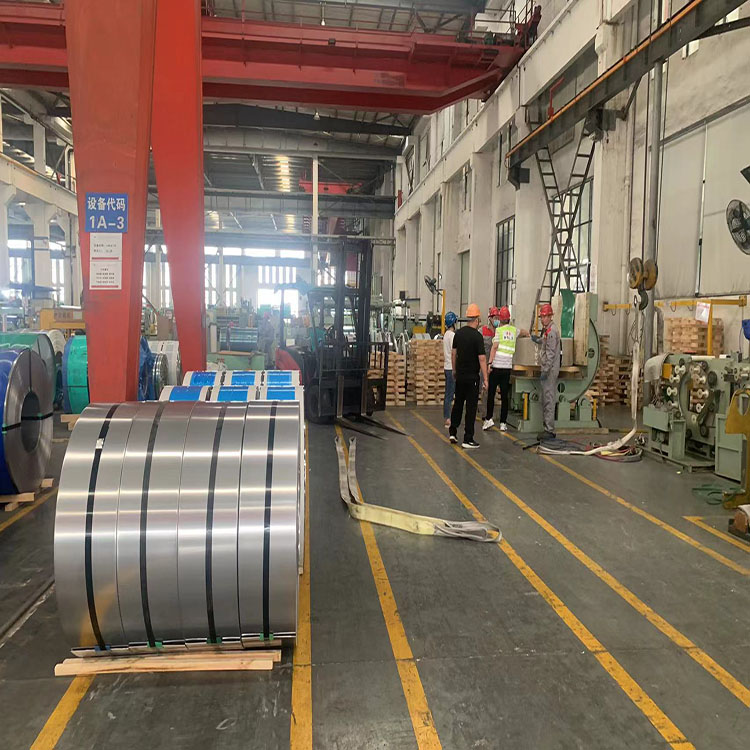
What is X2CrNiN18-10?

X2CrNiN18-10 is an austenitic stainless steel, also known as 1.4311 stainless steel. It is a stainless steel material defined by the European Standardization Organizations and is commonly used in the manufacture of equipment in the fields of chemistry, textiles, paper, food processing, and pharmaceuticals.
What is the chemical composition of X2CrNiN18-10?
Carbon (C): up to 0.03%
Silicon (Si): Up to 1.00%
Manganese (Mn): Up to 2.00%
Phosphorus (P): up to 0.045%
Sulfur (S): up to 0.015%
Chromium (Cr): 17.0% - 19.5%
Nickel (Ni): 8.0% - 10.5%
Nitrogen (N): 0.10% - 0.16%
What are the physical properties of X2CrNiN18-10?
The following are some physical properties of X2CrNiN18-10 (1.4311) stainless steel:
Density: 7.9 g/cm³.
Modulus of elasticity: approx. 200 GPa.
Coefficient of thermal expansion: From room temperature to 100°C, the linear thermal expansion coefficient is 16.5 μm/m°C.
Thermal conductivity: At room temperature, the thermal conductivity is about 15 W/(m·K).
Resistivity: At room temperature, the resistivity is about 0.75 × 10^-6 Ω·m.
What are the advantages of X2CrNiN18-10 (1.4311) stainless steel?
Good corrosion resistance: X2CrNiN18-10 stainless steel has good corrosion resistance in corrosive media such as chlorides, and is especially suitable for equipment in the marine and chemical fields.
Good weldability and processing performance: X2CrNiN18-10 stainless steel is easy to process and cut, and at the same time, it is not easy to have defects such as thermal cracks and pores during the welding process.
High-temperature strength and good heat resistance: X2CrNiN18-10 stainless steel still maintains good strength and corrosion resistance at high temperatures, and is suitable for applications in high-temperature environments.
Low magnetism: X2CrNiN18-10 stainless steel can achieve low magnetic requirements by controlling the composition during cold drawing, cold rolling and other processing processes, and is suitable for occasions with strict magnetic requirements.
What are the disadvantages of X2CrNiN18-10 stainless steel?
Higher cost: Compared with ordinary carbon steel, the cost of stainless steel materials is higher, which will increase production costs.
Easy to form scratches: The surface of stainless steel is relatively fragile and is easily scratched by hard objects, which affects the appearance.
Not suitable for strong corrosive media: Although X2CrNiN18-10 stainless steel has excellent corrosion resistance, it may still be corroded and damaged in strong corrosive media.
What are the uses of X2CrNiN18-10?
X2CrNiN18-10 (1.4311) stainless steel has excellent corrosion resistance, weldability and processability, so it is widely used in the following fields:
Chemical industry: X2CrNiN18-10 stainless steel is widely used in the chemical industry in the manufacture of acid-resistant, alkali-resistant, salt-resistant and other corrosive media equipment, such as hydrogen chloride manufacturing equipment, phosphoric acid equipment, hydrochloric acid equipment, etc.
Marine engineering: X2CrNiN18-10 stainless steel is widely used in marine engineering, such as seawater desalination equipment, seawater treatment equipment, offshore oil platforms, etc.
Food industry: X2CrNiN18-10 stainless steel has good corrosion resistance and hygienic performance for food, and is suitable for equipment manufacturing in food production and processing, such as pharmaceutical equipment, dairy processing equipment, etc.
Building decoration: X2CrNiN18-10 stainless steel material has a smooth and beautiful surface, and is widely used in building decoration materials, interior decoration, furniture manufacturing, etc.
What is the manufacturing process of X2CrNiN18-10?
The manufacturing process of X2CrNiN18-10 stainless steel mainly includes the following steps:
Smelting: use electric arc furnace for smelting, heat the furnace body at high temperature, mix and smelt raw materials such as pig iron, scrap steel, ferrochrome, etc., and finally obtain stainless steel blanks that meet the requirements.
Pickling: After hot rolling, some impurities such as scale and rust will remain on the surface of the steel, which need to be removed by pickling to ensure the surface finish and corrosion resistance of the steel.
Cold drawing or cold rolling: Through cold drawing or cold rolling and other processing techniques, the diameter or width of the steel can be further reduced, and the strength and hardness of the steel can be improved at the same time.
Annealing: After cold working, the steel will produce residual stress, which needs to be eliminated by annealing process to stabilize the physical properties of the steel and improve the plasticity and machinability of the steel.
Finishing: Through finishing processes such as bright treatment, the surface finish of steel is improved to meet specific surface requirements.
How is X2CrNiN18-10 heat treated?
X2CrNiN18-10 stainless steel can be heat treated by solution treatment, the specific steps are as follows:
Solution treatment: heat the X2CrNiN18-10 steel to a temperature range of 1050°C-1150°C, keep it warm for a period of time, and then quickly cool it to room temperature, and then carry out solution treatment. This treatment process can combine the chromium element at the grain boundary with carbon, nitrogen and other elements to form a stable chromium compound, thereby improving the corrosion resistance of the material.
Cooling treatment: After solution treatment, cooling treatment is required to make the material have good mechanical properties. The steel parts can be cooled naturally in the air, or rapidly cooled by water quenching, oil quenching, etc., so that the material reaches a certain hardness and strength.
How is X2CrNiN18-10 welded?
X2CrNiN18-10 stainless steel can be joined by a variety of welding methods, including manual arc welding, argon arc welding, plasma welding, electron beam welding, laser welding, etc. Among them, manual arc welding and argon arc welding are relatively common welding methods. The specific method is as follows:
Manual arc welding: Manual arc welding is suitable for small and low-demand welding work on X2CrNiN18-10 plates. Proper electrode material and DC power supply should be selected during welding to ensure stable current and voltage. Cleaning and degreasing should be carried out before welding to avoid the influence of impurities and pollutants on the weld. When welding, the arc should be controlled to be stable to ensure the shape and size of the weld.
Argon arc welding: Argon arc welding is suitable for welding larger plates and pipes of X2CrNiN18-10 stainless steel. Surface treatment and decontamination should be carried out before welding to ensure that the surface of the material is clean. When welding, the appropriate argon arc welding tungsten electrode and argon gas flow should be selected to ensure that the welding area is not oxidized and polluted. When welding, the current and voltage should be controlled to be stable to ensure the welding quality.
By clicking 'Allow All', you agree to the storage of cookies on your device to enhance site navigation, analyze site usage and assist with our marketing efforts. Coo Cookie Notice




